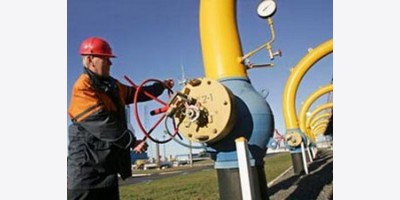By Bloomberg

Photographer: Ty Wright/Bloomberg
U.S. crude oil reserves increased 4.5 billion barrels to 33.4 billion, the highest... Read More
U.S. proved reserves of crude oil and lease condensate reached the highest level in 36 years as new technology and high prices made supplies locked in shale formations available.
Reserves increased 4.5 billion barrels to 33.4 billion in 2012, the most since 1976 and the biggest annual gain since 1970, the Energy Information Administration said today in its annual U.S. Crude Oil and Natural Gas Proved Reserves report. Oil deposits in shale rock, also known as “tight oil” formations, more than doubled from a year earlier.
Proved reserves, or resources that can be recovered under existing economic and operating conditions, grew as a combination of horizontal drilling and hydraulic fracturing, or fracking, unlocked tight oil and as crude prices that averaged more than $90 a barrel made drilling profitable. Increasing domestic resources, still small compared with countries like Saudi Arabia and Venezuela, have reduced the U.S.’s reliance on foreign oil.
“As our ability to get oil out of the ground improves and as prices stay high, more and more oil becomes available and moves into the category of proved reserves,” said Julius Walker, a global energy markets strategist at UBS Securities LLC in New York. “It’s just another manifestation of what the shale-oil revolution means. I expect this trend to continue.”
Estimate Uncertainty
Shale drilling, however, poses difficulties when it comes to accurate measurement of how much oil lurks beneath hundreds of feet of rock, according to John Lee, a University of Houston engineering professor. The same methods used for decades to estimate the reserves available to traditional vertical wells is sometimes misapplied to the horizontal wells used to tap shale. The shale wells accounted for about 35 percent of U.S. production in 2012, according the EIA.
Proved reserves climbed 15 percent in 2012 from 29 billion barrels in 2011, the EIA, the Energy Department’s statistical arm, said. Lease condensate, consisting primarily of hydrocarbons recovered as a liquid from natural gas, accounted for 8.6 percent of the total in 2012.
Tight oil reserves jumped to 7.34 billion barrels, or 22 percent of the total, in 2012 from 3.63 billion in 2011. Deposits in the Eagle Ford shale formation in Texas jumped to 3.37 billion from 1.25 billion, and those in the Bakken in North Dakota, South Dakota and Montana grew to 3.17 billion from 2 billion. Eagle Ford surpassed Bakken to become the biggest tight-oil play in the U.S.
‘New Peak’
“A new peak is arising because of this new source of previously bypassed oil,” said Steven Grape, the petroleum engineer at the EIA who wrote the report. “Texas and North Dakota for the past few years were the drivers for the gains.”
The government’s annual estimates of proved reserves are based on survey responses from about 1,100 domestic operators of oil and gas wells, according to the EIA.
U.S. crude-oil imports declined to 7.19 million barrels a day in the four weeks ended March 14, the lowest level since January 1997, the EIA previously reported. The U.S. met 87 percent of its energy needs in 2013, the highest level since 1985, agency data show.
Rising reserves “add to the view that the U.S. is moving toward being a lot less import-dependent,” Walker said. “The thing about reserves is that it’s not just a question of knowing where the oil is, it’s also a function of prices and technology.”
Oil Price
West Texas Intermediate crude, the U.S. benchmark, averaged $94.15 in 2012. The annual average has topped $90 a barrel for the past three years. Futures slipped 20 cents to $103.40 today and have averaged $98.93 this year.
“Proved reserves are very much dependent on prices,” Grape said. “If prices go up, proved reserves can actually increase. With higher prices, you can keep drilling and still make a lot of money.”
Oil reserves in the U.S. are still dwarfed by Venezuela, which held the most in the world with 297.6 billion barrels as of 2012, according to BP Plc’s Statistical Review of World Energy. Saudi Arabia, the U.S.’s second-biggest foreign oil source in 2013 after Canada, held 265.9 billion. Canada had 173.9 billion.
U.S. reserves may continue to rise “for a while” and then will plateau, Grape said.
“We have to keep drilling in order to maintain what just we’ve already got,” he said. “There comes a limit as to how many pipes you can put in the ground to get the oil out.”
To contact the reporter on this story: Moming Zhou in New York at mzhou29@bloomberg.net
To contact the editors responsible for this story: Dan Stets at dstets@bloomberg.net Margot Habiby























